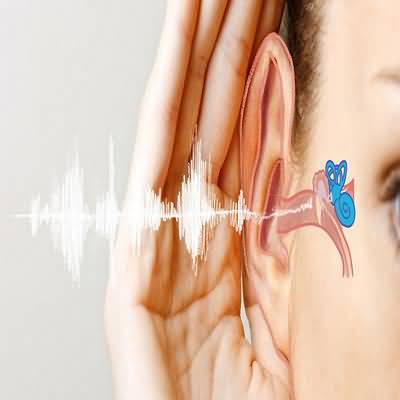Most commonly due to cerumen impaction, transient eustachian tube dysfunction from upper respiratory tract infection, or age-related hearing loss
Classification & Epidemiology categorizes hearing loss as normal, mild, moderate, severe, and profound and outlines the vocal equivalent as well as the decibel range
Conductive Hearing Loss Conductive hearing loss results from external or middle ear dysfunction
Four mechanisms each result in impairment of the passage of sound vibrations to the inner ear:obstruction (eg, cerumen impaction)mass loading (eg, middle ear effusion)stiffness (eg, otosclerosis)discontinuity (eg, ossicular disruption)
Conductive losses in adults are most commonly due to cerumen impaction or transient eustachian tube dysfunction from upper respiratory tract infection
Persistent conductive losses usually result from chronic ear infection, trauma, or otosclerosis
Conductive hearing loss is often correctable with medical or surgical therapy, or both
B
Sensorineural Hearing Loss Sensory and neural causes of hearing loss are difficult to differentiate due to testing methodology, thus often referred to as “sensorineural
” Sensorineural hearing losses in adults are common
